#1. Embrace A Digital Culture
Explore tagged Tumblr posts
Text
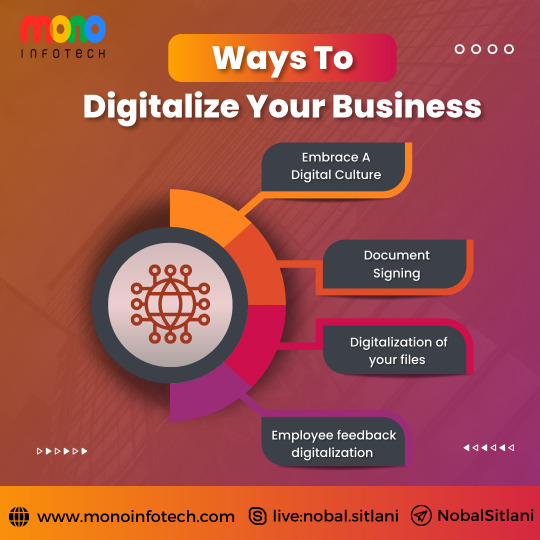
Ways To #Digitalize Your #Business
1. Embrace A Digital Culture
2. Document Signing
3. Digitalization of your files
4. Employee feedback digitalization
Website - www.monoinfotech.com
Skype - live:nobal.sitlani
Telegram - NobalSitlani
#digital #culture #document #digitalization #your #feedback #employee #monoinfotech#culture #document #digitalization #your #feedback #employee #monoinfotech
#Ways To#Digitalize Your#Business#1. Embrace A Digital Culture#2. Document Signing#3. Digitalization of your files#4. Employee feedback digitalization#Website - www.monoinfotech.com#Skype - live:nobal.sitlani#Telegram - NobalSitlani#digital#culture#document#digitalization#your#feedback#employee#monoinfotech#digitalmarketing#itcompany#affiliate marketing
0 notes
Text
Battle Plans for the next 4 days...
Guys, we're doing really, really well with only one version. But now is the time when lots of folks get back into work routines, or get complacent with their playlists due to fatigue.
We have GOT to buy from all stores, in addition to iTunes. And we need to BUY THE TRACKS SEPARATELY for BB200. If you need help with purchasing, JiminFunds is open. If you don't need help, please donate to JiminFunds.
If you order physicals online now, they will only ship in time for Week 2. So for now, you need to concentrate on either buying in person or digital sales. Don't neglect these stores, and remember that the BTS store has THREE DIGITAL ALBUM VERSIONS!

We have also GOT to diversify streaming platforms in addition to Spotify. I get it's a tough economy, but free trial premium streams count and you can go make a free account right now on Apple Music, Amazon Music, Deezer, Qobuz, Tidal and Pandora. We HAVE to use YouTube and YouTube Music. There's no way around it; it's necessary for charting. There's no reason not to take advantage of a free trial-- they remind you to cancel before you get charged!
Later on today we are going to get remixes and we MUST use them correctly. Stream the album top to bottom. Then the remixes. Use Face and other songs as filler. Switch accounts and keep going.
We also need to vote. This is the last chance for Jimin to get a Countdown trophy before they close up shop for the Olympics and, surprisingly, the competition is super high (because we don't have tons of versions). So every single vote matters now. Download the Mnet app and just take 1 minute out of your day to vote, please:
My friends, we've done so, so well with our enthusiasm and hard work. So much better than we thought possible. The general public has embraced Who on social media; top playlists are ranking it high in public lists; and even some radio stations are picking it up. Muse is doing so well that the company is actually gonna give us remixes and put in the effort.
Now is time to be focused and precise. No distractions. No bullshit. Stay sharp, puppykitties.
Discourse can come later. Right now, we have a real chance to make history for our boy.
Do it for Jimin.

Love, Roo
38 notes
·
View notes
Text
A Breakdown on the Evolution of Clowns
1. The Prankster Ancestor:
The clown species can be traced back to a distant common ancestor known as the Prankster Primus. This mischievous creature had a knack for playful antics and had developed basic comedic adaptations to ward off predators. Its ability to mimic sounds and movements for diversion laid the foundation for the evolutionary path toward laughter.
2. The Jester Epoch:
As time passed, a subgroup of Prankster Primus evolved into the Jester Epoch. These beings developed more sophisticated humor, using wit, jest, and physical comedy to entertain their social groups. The Jesters were the first to experiment with colorful costumes and facial expressions, setting the stage for the vibrant appearance of future clown species.
3. The Buffoon Branch:
From the Jester Epoch emerged the Buffoon Branch, a lineage characterized by exaggerated features and slapstick humor. Buffoons embraced physical comedy, incorporating elements like oversized shoes, comically large noses, and pratfalls into their performances. This marked the beginning of the distinct clown aesthetic that we recognize today.
4. The Circus Evolution:
As societies developed, so did the need for entertainment. The Circus Evolution saw the integration of clowns into traveling shows and performances. The evolving clown species adapted to the demands of the stage, perfecting their comedic timing and mastering the art of engaging large audiences.
5. The Technicolor Transformation:
In a burst of evolutionary creativity, the Technicolor Transformation introduced vibrant colors and intricate patterns to clown attire. This adaptation not only enhanced the visual appeal of clowns but also served as a form of communication. The more colorful the clown, the more likely they were to attract attention and laughter.
6. The Bozo Boom:
A significant milestone in clown genealogy was the Bozo Boom, during which the iconic character Bozo the Clown emerged. Bozo's popularity influenced the evolution of clown traits, shaping the modern understanding of what constitutes a classic clown. The Bozo Boom marked a period of cultural significance for the clown species.
7. The Globalization of Giggles:
In recent times, the globalization of entertainment has led to the spread of clown species across the world. Clowns from different regions have adapted to local humor, creating a rich tapestry of comedic diversity. The genealogy of clowns now spans various subtypes, from the traditional circus clown to the modern street performer.
8. The Digital Jest:
In the age of technology, the Digital Jest has emerged as a subcategory of clowns adapting to online platforms. Memes, GIFs, and virtual performances have become integral parts of the clown species' evolution, ensuring their continued relevance in the ever-changing landscape of entertainment.
#clownery#clowncore#clown posting#clown art#clown#clown husbandry#clowns#jesters#pranksters#jokes#unicycles
122 notes
·
View notes
Text
The History of Dice in Gaming: From Ancient Civilizations to Modern Fun
Dice have been a part of gaming for millennia, with a rich history dating back to ancient civilizations. In this article, we'll delve into the captivating story of dice in gaming, from their origins to their significant role in today's tabletop and digital games. Join us as we explore the evolution of this timeless gaming tool.
Ancient Beginnings: The Birth of Dice
The history of dice can be traced back to around 3000 BCE when dice-like objects were discovered in Mesopotamia. These early dice were crafted from bone, clay, or stone, often featuring irregular shapes, which added an element of unpredictability to the games. These discoveries provide a unique insight into the ancient world's love for chance-based games.
Dice in ancient Mesopotamia were not only used for entertainment but also served ritual and divination purposes. It's remarkable to think that these simple objects played a significant role in the lives and beliefs of ancient civilizations.
Dice in Ancient Greece and Rome
As civilization progressed, so did the development of dice. Ancient Greece introduced the concept of six-sided dice, still the most common form today. Crafted from bronze or other metals, these dice featured numbered pips on each face, reminiscent of the dice we use today. Romans also embraced dice for games like "Tesserae," fostering the dice's continued popularity in the gaming world.
The use of dice in ancient Greece and Rome was not limited to entertainment. These cultures recognized the educational and strategic value of dice games. Moreover, the Roman fascination with dice extended to gambling, a practice that was both loved and loathed by different segments of society.
Medieval Europe: The Moralization of Dice
Throughout the Middle Ages, dice games persisted despite opposition from religious and moral authorities who viewed them as a form of gambling. The appeal of dice games endured, offering a form of entertainment that captivated people in Europe.
Dice in medieval Europe were often associated with gambling and were regarded with suspicion. The Church and various authorities made efforts to regulate and sometimes ban dice games. However, these measures did little to dampen the enthusiasm for dice, which continued to be an integral part of medieval social life.
Dice in the Modern Era
The 16th century witnessed the emergence of what we now call "standard dice," with their iconic cube shape and numbered faces from 1 to 6. These dice gained popularity for their simplicity and fairness, becoming a staple in board games, gambling, and various other forms of entertainment.
Dice games in the modern era have evolved significantly. Standard six-sided dice, known as D6, have become a universal tool in games and gambling, offering a balanced and predictable way to introduce chance into various activities. Their simplicity makes them accessible and enjoyable for players of all ages.
Tabletop Role-Playing Games: A New Dawn for Dice
The late 20th century brought about a resurgence in dice-driven gaming, courtesy of tabletop role-playing games (RPGs) like "Dungeons & Dragons." RPGs incorporated various dice types, adding complexity and chance to gameplay. Discover how dice rolls shaped epic adventures and character development.
Tabletop role-playing games introduced a new level of complexity to dice gaming. In D&D, for instance, various types of polyhedral dice, from the iconic 20-sided die to the 4-sided die, are used to determine outcomes. Players relied on dice rolls to decide the success of actions, the outcome of battles, and the development of their characters, creating immersive storytelling experiences.
Dice in Modern Board Games
Modern board games like "Monopoly" and "Settlers of Catan" have embraced dice to introduce elements of randomness and strategy. Explore how dice enhance gameplay and make every session a unique and engaging experience.
Board games with dice have evolved to provide a blend of strategy and chance. Whether it's the roll of the dice determining your resources in "Catan" or your moves in "Monopoly," these games challenge players to make strategic decisions while embracing the element of unpredictability that dice bring.
Digital Dice: The 21st-Century Evolution
In the digital age, dice seamlessly transitioned into video games. Online casinos offer virtual dice games, allowing players to enjoy the thrill of rolling the dice from their homes. Discover the digital evolution of this timeless gaming tool.
Digital dice have opened up new possibilities for gaming. Online casinos provide a platform for virtual dice games, where players can experience the excitement of rolling the dice without needing physical dice. The convenience of digital dice has made them a popular choice for online gamblers, and their use extends beyond casinos to a wide range of digital games.
To The Future
The history of dice in gaming is a testament to the enduring appeal of these versatile tools. From ancient civilizations to modern tabletop and digital games, dice have remained a constant presence. Whether for recreation, gambling, or storytelling, dice continue to capture our imagination and add an exciting element of chance to the games we love.
Dice have truly stood the test of time, evolving with each era and remaining an integral part of human entertainment. As technology advances, we can only imagine how dice will continue to shape the future of gaming, captivating new generations of players and enthusiasts.
7 notes
·
View notes
Text
Why you should be creating online in your feminine energy
In a world where hustle culture and masculine energy often dominate the landscape, it's easy to overlook the transformative power of feminine energy. Embracing your feminine energy in content creation is not just a trend—it's a revolution. Here's why tapping into this divine force can elevate your content and resonate deeply with your audience.
1. Authenticity and Connection
Creating from your feminine energy is about embracing authenticity. This energy is intuitive, nurturing, and deeply connected to your true self. When you create from this place, your content radiates sincerity, making it easier for your audience to connect with you on a genuine level. People are drawn to authenticity, and by being true to yourself, you invite others to do the same.
2. Creativity and Flow
Feminine energy is inherently creative. It's about flowing with inspiration rather than forcing it. When you create content in your feminine energy, you're more likely to experience those "aha" moments where ideas seem to come effortlessly. This flow state not only makes content creation more enjoyable but also results in work that feels organic and inspired.
3. Intuition and Empathy
Feminine energy is intuitive and empathetic. It allows you to tune into the needs and desires of your audience with greater sensitivity. This means you can create content that truly resonates, addressing the pain points and aspirations of your followers. By understanding and empathizing with your audience, you can build a loyal community that feels seen and valued.
4. Balance and Harmony
Incorporating feminine energy into your content creation brings balance and harmony. It's about integrating the yin and yang, the masculine and feminine, within your work. While masculine energy might push you to set goals and achieve, feminine energy reminds you to nurture and sustain. This balance prevents burnout and ensures that your creative process is sustainable in the long run.
5. Magnetism and Attraction
There's a certain magnetism to feminine energy. It's alluring, captivating, and powerful in its softness. When you create from this space, your content naturally attracts those who resonate with your vibe. It's not about chasing followers but about drawing them in with your unique energy and essence.
6. Self-Care and Well-Being
Creating from your feminine energy is also about honoring your own well-being. It encourages self-care and self-compassion, reminding you to fill your own cup before you pour into others. This approach ensures that your content creation journey is not just about output but also about nurturing your own growth and happiness.
Embrace Your Feminine Energy
Incorporating feminine energy into your content creation is a powerful way to stand out in a crowded digital space. It's about creating from a place of authenticity, intuition, and empathy. By doing so, you not only produce content that resonates deeply with your audience but also cultivate a fulfilling and sustainable creative practice.
So, lean into your feminine energy, let your intuition guide you, and watch as your content blossoms into something truly magical and impactful.
Take the social style quiz
#that girl#high value woman#high value mindset#content creator#authentic creator#authenticity#the artists way#feminine energy#feminine creator#it girl energy#it girl#advice#love your life#love yourself#becoming that girl#lucky girl#femininity#feminine skills
14 notes
·
View notes
Text
A Beginners Guide on Minimalism, in a Consumer-Driven Society

Image Credit: Goes to me!
Stay on your toes, like they're cold ice cubes below (did you vibe to that line!! Don't you think I'll be an awesome rap artiste..... just kidding) I've been watching too much rap battles lately. Back to our topic 👇
Minimalism sounds great, but how do you embrace it when everything around you promotes more stuff? Let's try easy steps to simplify your life, shall we?
What is Minimalism?
For starters, it isn’t about owning the least, it’s about focusing on what adds value to your life and cutting out the excess. It’s intentional living, choosing to keep what serves a purpose or brings you joy, and letting go of the rest.
But you might say, “I love a lot of stuff”.....let's start here.
Step 1: Find Your “Why”
Before you start, ask yourself why you want to embrace minimalism. Is it to reduce stress, save money, or gain more time? Understanding your reason will help you stay motivated through the process.
Step 2: Start Small
Don’t overwhelm yourself by trying to declutter your entire house at once. Begin with one area, a drawer, a closet, or your desk. Hold each item and ask:
• Do I use this regularly?
• Does it improve my life?
If the answer is no, let it go. Donate, sell, or recycle what you no longer need.
Step 3: Adopt the One-In-One-Out Rule
For every new item you bring into your life, remove an old one. This rule prevents clutter from creeping back in and encourages mindful purchasing.
Step 4: Curb Impulse Shopping
Honestly, we live in a world filled with sales and promotions, it’s easy to make impulse purchases. Before buying, ask yourself; Do I really need this? Can I wait 30 days? Trust me, you'll often find that you don’t need it as much as you thought.
Step 5: Focus on Experiences, Not Things
Minimalism shifts your focus from possessions to experiences. Instead of buying more stuff, invest in experiences like a trip, a new hobby, or a memorable day with loved ones. These moments often bring more lasting joy than material things.
Step 6: Set Boundaries with Shopping
Consumer culture thrives on getting you to buy more. Set boundaries by unsubscribing from retail newsletters, limiting online shopping, or setting a spending cap. These small shifts keep you in control.
Minimalism Doesn't Just Happen Automatically
Minimalism isn’t a one-time event. It’s an ongoing process of choosing what matters. By starting small, you can build habits that simplify your life and reduce stress. Minimalism looks different for everyone, so find your rhythm, stay mindful, and remember it’s about making space for what truly matters.
I'll be talking about the digital aspect of Minimalism very soon. Stay frosty!
Signing out, kad
References
Becker, Joshua. The More of Less: Finding the Life You Want Under Everything You Own
Kondo, Marie. The Life-Changing Magic of Tidying Up
Millburn, Joshua & Nicodemus, Ryan. The Minimalists: Live a Meaningful Life
#practical minimalism tips#tips#practical#minimalism#beginner's guide to minimalism#guide#consumerism vs minimalism#consumerism#minimalist living for beginners#simple#declutter your life#simple living guide#simple living#minimalist lifestyle tips#minimalist lifestyle#minimalism in a consumer-driven society#minimalism for beginners#how to practice minimalism
3 notes
·
View notes
Text



















Pi Day
Pi Day is on March 14, and any day that combines fun, education, and pie is a day worth celebrating! Pi, also known by the Greek letter “π,” is a constant value used in math that represents the ratio of a circumference of a circle to its diameter, which is just about 3.14….15…9265359… (and so on). Not only that, but the fourteenth of March is also Albert Einstein’s birthday, so all together it’s nothing short of a mathematician’s delight.
When is Pi Day 2024?
The beautiful constant pi (π) is celebrated by mathematicians around the world on National Pi Day on March 14.
History of Pi Day
To learn about pi, we need to go back a few thousand years and learn about this elusive number. The value of pi was first calculated by Archimedes of Syracuse (287–212 BC), one of the greatest mathematicians of the ancient world.
However, it was first baptized with the Greek letter as its name when William Oughtred called it as such in his works dating back to 1647, later embraced by the scientific community when Leonhard Euler used the symbol in 1737.
But how did Pi Day end up in a country-wide phenomenon? For that, we need to travel to the Exploratorium in 1988 San Francisco, where it was thought up by physicist Larry Shaw.
Shaw linked March 14 with the first digits of pi (3.14) in order to organize a special day to bond the Exploratorium staff together, where he offered fruit pies and tea to everyone starting at 1:59 pm, the following three digits of the value. A few years later, after Larry’s daughter, Sara, remarked that the special date was also the birthday of Albert Einstein, they started celebrating the life of the world-famous scientist.
Pi Day became an annual Exploratorium tradition that still goes on today, and it didn’t take long for the idea to grow exponentially, hitting a peak on March 12, 2009, when the U.S Congress declared it a national holiday.
Now, celebrated by math geeks all around the circumference of the world, Pi Day became a pop culture phenomenon, with several places partaking in the activities, antics, observations and all the pie eating they can.
Pi Day timeline
March 14, 1988
The Inception
Larry Shaw celebrates Pi Day for the first time.
March 12, 2009
It’s Official
The U.S Congress declared March 14 National Pi Day.
March 14, 2015
Super Pi Day
The first ten digits of pi were achieved on 9:26:53 a.m. (3/14/15/92653)
August 19, 2017
Legacy That Lives
Larry Shaw passes away as Pi Day leaves its mark on pop culture.
Traditions of the day
Pi Day gives math enthusiasts the opportunity to celebrate their love for numbers and the enigma that is the infinite pi.
Since 1988, the day has been celebrated at the San Francisco Exploratorium. The first celebration was organized by Larry Shaw, who worked as a physicist at the center. The staff participated by marching around the exploratorium and consuming fruit pies. This tradition has lived on since. Math lovers talk about math, host get-togethers, and have pi recital competitions. In schools, teachers arrange scavenger hunts, pie bake sales, and even Pi Day workouts to stimulate more interest in learning and practicing mathematics. Those folks who work in food marketing also love to get involved, so keep your eyes peeled for some discounts, deals, and freebies on pies, it’s going to be an extra tasty day.
By the Numbers
14th – of March is also Albert Einstein’s birthday
31.4 million – the world record held by Emma Haruka Iwao for calculating the most accurate value of pi.
4 – the number of months it took Emma Haruka Iwao to calculate the most accurate value of pi.
70,000 – the number of decimal places of pi memorized by Rajveer Meena in 2015.
10 – the number of hours it took Rajveer Meena to make the world record.
3.125 – the original number used for pi by the Babylonians.
22.4 trillion – the number of digits calculated by Swiss scientist Peter Trueb, using a computer.
24 – the number of hard drives on the computer used by Peter Trueb for calculating pi.
700,000 – the number of years it will take to recite the 22 trillion digits of pi.
15,000 – the number of digits of pi memorized by Mark Umile in the U.S.
Pi Day FAQs
Why is pi important?
Pi is very important for calculations in math, engineering, construction, physics and space exploration. Many often consider pi the most important number in all of mathematics.
Which pie should I bake for Pi Day?
Any you’d like. We do not play favorites when pie is concerned. Pies are really simple to make and can be made with several sweet or savory fillings. Apple Pie, Chicken Pot Pie, Pizza pie, be our guest!
Are there any places that give Pi Day deals?
Check restaurants, supermarkets and bakeries over on the Internet for special Pi Day deals. Places like Whole Foods, Boston Market and several pizza chains across the country have special day-long sales.
Pi Day Activities
Enjoy pie of course: Pi is a homophone of pie: the 2 words are pronounced similarly, but are spelled differently and mean different things. Celebrate Pi Day by eating lots of pie! Pizza, cherry, apple, you name it!
Throw a potluck party: Everyone loves to show off their family pie recipe. Make it a potluck and everyone will be inclined to bring their favorite pie to Pi Day, whether it's a pizza pie, a pot pie, a savory pie, or a sweet pie. Make a playlist that features songs like "I Like Pie, I Like Cake" and "American Pie.”
Try making a new pie: Ever tried to make a pie before? Now's your chance to bake your very own. Not into the sweet stuff? Don't worry, there are various savory pie recipes out there so that everyone can enjoy the warm buttery flakiness that comes with a fresh baked pie.
5 Facts About Pi
People compete in memorizing it: Rajveer Meena has the record for memorizing the most decimal places of pi at 70,000.
It’s used as stress tests for computers: Computing pi is a kind of “digital cardiogram” for computers.
A Givenchy men’s cologne is named pi: So you can smell like pi too if you are the intellectual and visionary kind.
It has other names: Pi can also be named “Archimedes’ constant,” or “Ludolph’s number.
It has been used by heroes: Spock foils the evil computer by having it calculate pi’s value in Star Trek’s episode “Wolf in the Fold”
Why We Love Pi Day
Pi is infinitely cool: Pi (π) is the ratio of a circle’s circumference to its diameter — and amazingly for all circles of any size, pi will always be the same. Pi is an "irrational number," meaning its exact value is completely unknown. Scientists have calculated billions of digits starting with 3.14159265358979323…, but no recognizable pattern ever emerges. We could continue on and on until infinity and we'd still have no idea what digit might emerge next.
Pi sounds like pie: If you are a nerd that likes pies this holiday is pretty much the best combination of the most interesting things in life: pie and mathematics. And of course that means that in order to celebrate abstract mathematical items that are somewhat irrational the obvious solution is to incorporate pie into the holiday.
Pi links mathematics to the real world: Maybe when you were in math class, you stared off into space wondering why on earth 'logs' or 'proofs' mattered so much. Pi is the answer, well at least, one of the things that links math back to real world uses. Because pi is linked to circles it is also linked to cycles, things like calculating waves, ebb and flow, the oceans tides, electromagnetic waves and much more. In addition, many natural world phenomena can also be calculated with pi — like the shape of rivers, the disc of the sun, the spiral of DNA and even the pupil of an eye.
Source
#Vancouver#Whistler#travel#original photography#vacation#tourist attraction#landmark#cityscape#architecture#public art#summer 2023#Canada#British Columbia#Quesnel#Whitehorse#Houston#Napa Valley#Bend#Pi Day#PiDay#3.14159#14 March#USA
7 notes
·
View notes
Text
🌟 6-Month Novaturient Challenge 🌟
Month 1: Embrace New Beginnings
Self-Discovery: Spend time reflecting on what you truly want to change or explore. Keep a journal of your thoughts and feelings about where you want to go next.
New Experiences: Try something completely new—a new hobby, a new class, or a new activity. Step out of your comfort zone and see what resonates with you.
Mindfulness: Start a daily mindfulness practice. Spend 10 minutes each day focusing on your inner desires and how they align with your goals.
Month 2: Redefine Your Path
Goal Setting: Outline your short-term and long-term goals. Create a vision board or action plan to visualize and track your progress.
Skill Building: Identify a skill or area you want to develop further. Enroll in a course or workshop to enhance your expertise.
Networking: Connect with people who inspire you or are in fields you're interested in. Attend events or join groups that align with your new goals.
Month 3: Transform Your Environment
Declutter: Clear out physical and mental clutter. Organize your space to reflect your new direction and goals.
Home Upgrade: Make changes to your living environment that inspire you—fresh decor, a new arrangement, or creating a dedicated space for your new pursuits.
Digital Detox: Reduce time spent on digital distractions. Focus on activities and connections that foster personal growth.
Month 4: Explore and Expand
Travel: If possible, visit a new place or immerse yourself in a different culture. Gain new perspectives and inspirations from your travels.
Learning: Dive into books, podcasts, or articles that broaden your understanding of new subjects or philosophies.
Creative Projects: Start a creative project that reflects your novaturient spirit—be it writing, art, or a personal venture.
Month 5: Cultivate New Relationships
Social Circles: Seek out and build relationships with people who share your new interests or who challenge your perspectives.
Mentorship: Find a mentor or coach who can guide you through your transformation and offer support and advice.
Giving Back: Engage in community service or support causes you’re passionate about. Giving back can often lead to new insights and connections.
Month 6: Reflect and Celebrate
Self-Reflection: Review your journey and acknowledge the growth and changes you’ve experienced. Reflect on how your novaturient spirit has shaped this period.
Celebrate Milestones: Reward yourself for the achievements and new experiences you’ve embraced. Celebrate the progress you’ve made.
Future Vision: Set new intentions for the next phase of your journey. Use your experiences to outline new goals and aspirations.
3 notes
·
View notes
Text
September Comics Round-Up
Did not make my schedule of one year per week but also 1967 had 17 titles to read so I think that's okay.
Action Comics (336-371) (1966-1969)
The superman understanding of the ancient Greek pantheon/mythos is the messiest bullshit i have ever seen. 1! Never acknowledges that wonderwoman exists! 2! Completely mixes up greek and Roman names for gods. 3! Sooo many randos get upgraded to gods usually Achilles but most notably just now: prometheus???
Superman (183-213) (1966-1969)
Okay one of the oddest conceits that they like to have superman do is, when he needs an emergency Clark Kent double, he finds a random amnesia patient about the same size gets them to dress up as him, and then afterwards cures their amnesia, which almost always wiped out their memories of portraying Clark Kent (i don't think it works that way??) Where is he finding all these people just wandering around?
Superman's Pal, Jimmy Olsen (91-117) (1966-1969)
Whelp, it's more Jimmy, nothing really new to say.
Superman's Girl Friend, Lois Lane (63-89) (1966-1969)
They are getting a bit more modern and experimental with Lois's fashion and hair and I'm really enjoying it. On the other hand I had to read, with my very own eyes, and editor letter response that said "everyone knows women can't keep a secret" in answer to why Jarvis gets to know Bruce's identity but Lois can't know Clark's.
World's Finest Comics (156-182) (1966-1969)
I think WF is #1 for number of "imaginary tales" but I particularly liked the one where the Kent's adopted Bruce after his parents death. Jimmy and Dick's friendship continues to delight.
Superboy (127-153) (1966-1969)
I love Insect-Queen Lana more than anything else going on in this run, lana's love of bugs and whole-hearted embrace of the weird body horror transformations adds such an interesting facet to her character I love her. Also it is extremely funny of them to deage ma and pa by editorial order via an alien tv director deaging them to please his possible sponsers.
Adventure Comics (342-376) (1966-1969)
This is starting to get a little bit plotty almost! I'm enjoying it a lot. I'm also enjoying that we are starting to get character building moments out of uniform. The Ghost of Ferro Lad story about had me in tears! However! Save me from anti-feminism sixties story that is supposed to be happening a thousand years from now.
Aquaman (26-43) (1966-1969)
Garth nickname collection: Little Sardine, Sardine, Tadpole, Little Minnow, Minnow. Orm has shown up! I'm really liking him actually his unknowing uncleness to aquababy is v cute and fun. Speaking of aquababy I am expecting him to die any day now I am constantly surprised that he's still alive.
Green Lantern (43-58) (1966-1968)
Loving the artist team on this honestly, everyone is so fluid and expressive, and Hal's waist is snatched all the time. The split into two bodies issue really made me fall in love with plain old Hal Jordan, he's just so good even/especially when he is just a guy. Also, I love it when Hal uses the invisible power lantern as a weapon.
Justice League of America (34-60) (1965-1968)
Same old justice league stuff. Issue 57 is one of the worst things I've read in a while and I'm so not surprised that it hasn't been collected in any trades (judging by its lack of digital colors)
The Brave and the Bold (58-81) (1965-1969)
1967 is truly a guessing game of "which flavor of racist will we be today?" Will we be anti-indigenous? Anti-asian? Anti-black (no, no then we'd have to admit black people exist, better scratch that and make it "anti-robot") I'm so tired they think they're being so progressive with these storylines about "look at how well this culture is assimilating! The mystic old ways of their people are at once the enemy and something to be revered. From a distance tho. Wouldn't want to get too close." Its not just a Brave and the Bold problem but a bunch of it just happened in a row in that title so this is where I'm complaining.
Doom Patrol (94-121) (1965-1968)
Okay I knew it would happen but i still cried when they died... literally took me two pages to go from "la-di-da" to tears damn..... Rita my darling I'll miss you!!! I can't believe that we don't get a reaction comic for Gar and Steve tho.... just bam, they're dead, it's over. People in the sixties u've really let me down by letting it end this way.... more people should have written in.
Hawkman (12-27) (1966-1968)
This continues to be really good! Despite being extremely 60s-brained they try as hard as possible to show katar and shayera as equals in everything they do, its not katar saving her every time (tho he does a lot of the time it is still 60s brained) recommended if you are interested in the hawks and thanagar!
House of Mystery (156-173) (1966-1968)
Dial H for Hero is a v fun little set up, and I am sort of obsessed with Robbie's little catchphrase/ exclamation "sockamagee!" They gave me one (1) issue where his friend who is a girl finds out his identity and gets to try out the dial herself, only to them have her bungle everything and lose her memory of it because she's "just a girl" I hate it here (the 60s). J'onn J'onzz continues in the backups and continues to boot be what i expect. He's investigating crimes now but he is also committing identity fraud to do it (impersonating a millionaire that he saw die)
Metamorpho (1-17) (1965-1968)
Rex <3 Sapphire forever i love them! They really go overboard on the 60s slang in this title to the point where I am really not sure that anyone actually talked like that. The way smaller titles bend over backwards to pretend superman doesn't exist for their plots to work is honestly a little endearing. Rex literally hanging out with the guy in JLA, but noooo aliens are mysterious and uncommon, and the president is Definitely gonna call Rex Mason about them. Not a huge fan of the love triangle introduced, and it gets down right bizarre at the end with a bit of a cliffhanger, but overall worth a read if you are into Metamorpho!
Teen Titans (1-13) (1966-1968)
Rereading because the titans are my darlings. I especially love the little bits at the start of the issue where they are just kids hanging out.
The Spectre (1-10) (1967-1969)
I really love Neal Adam's art it's got a really delicate touch and dramatic shading, and he does figures really well. Also a shout out to Jerry Grandenetti/Murphy Anderson for some truly inspired panel layouts and lettering stuff, you don't get a lot of this back in the 60s. They decided to tell an entirely different sort of story for the last two issues and it is not a neat transition tbh.
Showcase (73-80) (1968-1969)
Some fun character intros for the creeper, hawk and dove, bat lash (surprise fave, what a guy), and dolphin, and some other guys too.
Anywho, that's that for September! Here's how my spreadsheet is looking:

As u can see I have given in and decided to go back and pick up The Atom, so I have that to look forward to in October!
4 notes
·
View notes
Text
#BodyPositive on Tumblr: A Journey of Self-Expression and Self-Objectification

Social networking sites such as Tumblr have become indispensable places for self-expression in the current digital era, particularly for women attempting to resolve the intricacies of body image. Social media users are being encouraged to embrace their individuality by the #bodypositive movement, which has become a potent critique of conventional beauty standards.
The #bodypositive community encourages sharing personal narratives that highlight the process of achieving self-acceptance in addition to showcasing physical appearances. Selfies with motivational captions reflecting their achievements and challenges are frequently shared by women. People can identify with the rich image of experiences that are created when written and visual storytelling are combined. The study discovered that users candidly discussed the difficulties they had appreciating their bodies in most of their posts, which were primarily about self-acceptance.
However, research also emphasizes the dual nature of self-expression within the framework of the #bodypositivity movement, whose main objective is to inspire people to love their bodies and appreciate the diversity of beauty. Although members of the community frequently experience exhilaration and affirmation, there is also an underlying theme of "self-objectification", and the pressure to conform to social norms to win others' acceptance can result in an overreliance on outside standards. "Self-objectification" specifically describes the experience of a person believing that their value is determined by how other people see them, particularly about their looks. This has the potential to undercut the movement's core principles by making women believe that they must “perform” a particular ideal image to be accepted, as opposed to merely embracing and enjoying who they are. Thus, even if #bodypositivity can foster a positive environment, it's crucial to be mindful of any possible constraints it may place on one's ability to express oneself.
Women are encouraging others to embrace their uniqueness and challenge social standards by being true to who they are. The #bodypositive movement on sites like Tumblr reminds us that beauty is varied and nuanced as we continue to negotiate the challenges of self-expression in the digital age, embracing the strength that comes from community support and the power of authenticity.
Draper, Jimmy, and Andrea M. McDonnell. “Fashioning Multiplatform Masculinities.” Men and Masculinities, vol. 21, no. 5, 6 Mar. 2017, pp. 645–664, https://doi.org/10.1177/1097184x17696190.
Griffin, Meridith, et al. “#BodyPositive? A Critical Exploration of the Body Positive Movement within Physical Cultures Taking an Intersectionality Approach.” Frontiers in Sports and Active Living, vol. 4, no. 908580, 10 Oct. 2022, www.ncbi.nlm.nih.gov/pmc/articles/PMC9589104/, https://doi.org/10.3389/fspor.2022.908580. Accessed 25 Sept. 2024.
Hutchinson, Jonathon. “Micro-Platformization for Digital Activism on Social Media.” Information, Communication & Society, vol. 24, no. 1, 13 June 2019, pp. 35–51, https://doi.org/10.1080/1369118x.2019.1629612.
Kondakciu, Klaudia, et al. “Self-Presentation and Gender on Social Media: An Exploration of the Expression of “Authentic Selves.”” Qualitative Market Research: An International Journal, vol. 25, no. 1, 13 Dec. 2021, https://doi.org/10.1108/qmr-03-2021-0039.
2 notes
·
View notes
Text
SOCIAL MEDIA
Embracing the Digital Horizon: Advantages of Social Media for Teenagers and Future Prospects
In an era dominated by technology, social media has become an integral part of the daily lives of teenagers. While concerns about its impact often make headlines, it's crucial to recognize the numerous advantages that social media brings to this demographic. From fostering communication to offering educational opportunities, social media plays a pivotal role in shaping the future prospects of teenagers.
1. Social Connectivity and Communication:
Social media platforms are virtual meeting places, allowing teenagers to connect with friends and family irrespective of physical distances. This connectivity strengthens relationships, enhances communication skills, and fosters a sense of community. Platforms like Facebook, Instagram, and Snapchat enable teenagers to share their experiences, milestones, and thoughts in real-time, contributing to the development of interpersonal skills crucial for future social and professional interactions.
2. Educational Resources and Learning Opportunities:
Social media serves as a vast repository of educational content and resources. Platforms like YouTube and TikTok offer tutorials, educational channels, and quick informational videos that cater to diverse learning styles. Teenagers can explore subjects beyond the confines of traditional education, nurturing a passion for lifelong learning. Social media acts as a supplement to formal education, providing a platform for self-directed learning and skill development.
3. Cultural Awareness and Global Perspectives:
Through social media, teenagers gain exposure to diverse cultures, lifestyles, and perspectives from around the world. Platforms like Twitter and Instagram serve as windows to global events, allowing teenagers to stay informed and cultivate a broader worldview. This cultural awareness contributes to empathy, tolerance, and a nuanced understanding of societal issues, preparing them for a future where cross-cultural communication is increasingly valuable.
4. Creative Expression and Skill Development:
Social media platforms provide teenagers with outlets for creative expression. Whether it's sharing artwork on Instagram, creating content on YouTube, or participating in challenges on TikTok, these platforms empower teenagers to showcase their talents. This not only boosts self-esteem but also nurtures creativity, digital literacy, and skills relevant to future careers in media, arts, and technology.
5. Networking and Professional Development:
LinkedIn, a platform designed for professional networking, is increasingly becoming a valuable resource for teenagers. It offers insights into various industries, connects them with mentors, and provides a platform to showcase achievements and ambitions. Early exposure to professional networking on social media can help teenagers make informed decisions about their future careers and educational pursuits.
6. Entrepreneurial Opportunities:
Social media has democratised entrepreneurship, allowing teenagers to explore and establish their own ventures. Platforms like Instagram and Etsy provide avenues for selling handmade crafts, art, or digital products. Teenagers can develop entrepreneurial skills, understand market dynamics, and gain practical experience in running a business – valuable lessons that can shape their future endeavours.
In conclusion, social media, when used responsibly, offers a myriad of advantages for teenagers, shaping not only their present but also their future prospects. From enhancing communication skills to providing educational resources and fostering creativity, social media acts as a catalyst for personal and professional growth. As teenagers navigate the digital landscape, it's essential to guide them towards leveraging these advantages to build a positive and constructive online presence that will benefit them in the years to come.
14 notes
·
View notes
Text
Bitcoin and the Shift in Power Structures: A Cultural Revolution
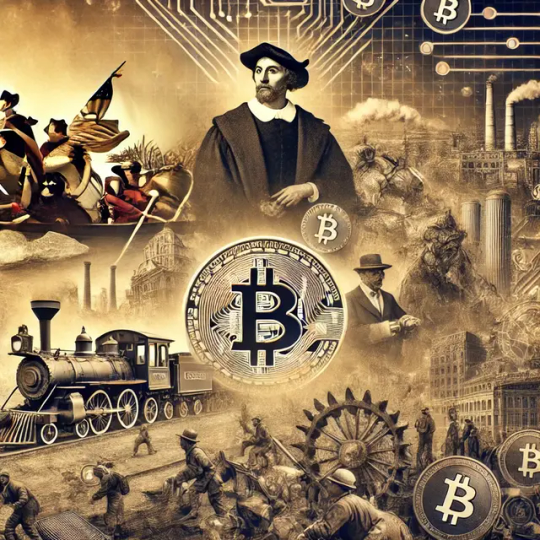
Throughout history, revolutions have not only altered the economic landscape but also reshaped societal norms and power structures. The adoption of Bitcoin is not just about financial gain—it’s about shifting the balance of power from centralized authorities to individuals.
1. Decentralizing Power: The Renaissance and Bitcoin
Historical Overview: The Renaissance was not just a time of artistic flourishing but also a period when the power of the church and monarchs was increasingly challenged by wealthy patrons and emerging democratic ideas. The Medici family and other Renaissance patrons funded groundbreaking work, but they also sowed the seeds for a future where individuals could wield more power in shaping culture and society.
Bitcoin Parallel: Bitcoin is similarly decentralizing power. Traditional financial systems are controlled by central banks, governments, and a handful of powerful institutions. However, Bitcoin offers a different path—one where financial sovereignty belongs to the individual. This parallels the shift seen during the Renaissance, where the power to shape the future began moving away from a select few to a broader community of thinkers, artists, and innovators.
Expanded Takeaway: Much like how Renaissance patrons revolutionized art and science, Bitcoiners are reshaping finance and governance. This shift in power will not only affect how we think about money but also how society operates, giving individuals more control over their economic futures.
2. Expanding Access: The Internet Boom and Bitcoin’s Financial Inclusion
Historical Overview: The internet didn’t just revolutionize communication—it made knowledge and connectivity accessible to everyone, regardless of their geography or social status. In the 1990s, access to the internet meant access to a new world of opportunities that could be tapped by anyone willing to take the leap.
Bitcoin Parallel: Bitcoin is doing the same for finance. Millions of people around the world remain unbanked, unable to participate in the global economy. But Bitcoin offers them an alternative—decentralized, borderless access to wealth creation and financial independence. This echoes how the internet opened doors for millions who were previously shut out from information and communication.
Expanded Takeaway: Just as the internet democratized information, Bitcoin is democratizing finance. Those who recognize this transformative power are not just part of a financial revolution—they’re part of a broader movement toward financial inclusion and independence.
3. A Technological Leap: The Industrial Revolution and Bitcoin’s Innovation
Historical Overview: The Industrial Revolution introduced radical new technologies that reshaped every facet of life, from how goods were made to how people lived. Entrepreneurs like Andrew Carnegie and John D. Rockefeller saw beyond the risks and seized opportunities in emerging industries like steel and oil. Their willingness to embrace innovation at scale revolutionized industries and paved the way for modern economic growth.
Bitcoin Parallel: Bitcoin represents a similar technological leap, but this time in the realm of finance. The underlying technology—blockchain—has the potential to revolutionize not just currency but the entire global financial infrastructure. Early Bitcoin adopters, much like the industrialists of old, have bet on a technology that is still misunderstood by many but has the power to redefine wealth creation and exchange.
Expanded Takeaway: Just as the Industrial Revolution transformed commerce, Bitcoin’s decentralized, trustless system is transforming how we exchange value. Those who recognize this early are not just investing in a digital currency—they are betting on the future of money itself.
4. Shaping Global Consciousness: Bitcoin’s Cultural Impact
Historical Overview: Each of these historical shifts didn’t just change economies—they changed how people thought, lived, and interacted with the world. The discovery of the New World opened people’s minds to the vast possibilities of exploration. The Gold Rush inspired people to chase new frontiers. The Industrial Revolution reshaped how we think about production and labor. And the internet fundamentally changed how we communicate and do business.
Bitcoin Parallel: Bitcoin is doing the same for today’s world. It’s reshaping the way people think about money, challenging long-held beliefs about currency, value, and financial sovereignty. Much like how the internet enabled a new form of global connection, Bitcoin is enabling a new form of global financial interaction, free from the control of centralized institutions.
Expanded Takeaway: Bitcoin isn’t just an investment; it’s a movement. As more people adopt Bitcoin, it’s not only the financial system that will change—our very culture and global consciousness will evolve with it.
Conclusion: Bitcoin’s Role in the Next Chapter of History The societal shifts triggered by Bitcoin mirror those caused by history’s most transformative events. As it continues to grow and gain mainstream adoption, Bitcoin will not only revolutionize the financial system but also challenge the way we think about power, inclusion, and innovation. Just as the explorers, industrialists, and internet pioneers reshaped their worlds, Bitcoiners today are building the foundation for a new, decentralized future.
Embrace the future. Be part of this transformation.
Take Action Towards Financial Independence
If this article has sparked your interest in the transformative potential of Bitcoin, there's so much more to explore! Dive deeper into the world of financial independence and revolutionize your understanding of money by following my blog and subscribing to my YouTube channel.
🌐 Blog: Unplugged Financial Blog Stay updated with insightful articles, detailed analyses, and practical advice on navigating the evolving financial landscape. Learn about the history of money, the flaws in our current financial systems, and how Bitcoin can offer a path to a more secure and independent financial future.
📺 YouTube Channel: Unplugged Financial Subscribe to our YouTube channel for engaging video content that breaks down complex financial topics into easy-to-understand segments. From in-depth discussions on monetary policies to the latest trends in cryptocurrency, our videos will equip you with the knowledge you need to make informed financial decisions.
👍 Like, subscribe, and hit the notification bell to stay updated with our latest content. Whether you're a seasoned investor, a curious newcomer, or someone concerned about the future of your financial health, our community is here to support you on your journey to financial independence.
Support the Cause
If you enjoyed what you read and believe in the mission of spreading awareness about Bitcoin, I would greatly appreciate your support. Every little bit helps keep the content going and allows me to continue educating others about the future of finance.
Donate Bitcoin: bc1qpn98s4gtlvy686jne0sr8ccvfaxz646kk2tl8lu38zz4dvyyvflqgddylk
#Bitcoin#Cryptocurrency#FinancialRevolution#Blockchain#DigitalGold#DecentralizedFinance#BitcoinHistory#EconomicShift#Innovation#FinancialFreedom#GoldRush#IndustrialRevolution#FutureOfMoney#CryptoCommunity#BitcoinPioneers#MoneyRevolution#BitcoinAdoption#InternetBoom#RenaissanceFinance#CryptoEducation#financial empowerment#financial experts#unplugged financial#globaleconomy#digitalcurrency#financial education#finance
2 notes
·
View notes
Text
Best 10 Business Strategies for year 2024
In 2024 and beyond, businesses will have to change with the times and adjust their approach based on new and existing market realities. The following are the best 10 business approach that will help companies to prosper in coming year
1. Embrace Sustainability
The days when sustainability was discretionary are long gone. Businesses need to incorporate environmental, social and governance (ESG) values into their business practices. In the same vein, brands can improve brand identity and appeal to environmental advocates by using renewable forms of energy or minimizing their carbon footprints.
Example: a fashion brand can rethink the materials to use organic cotton and recycled for their clothing lines. They can also run a take-back scheme, allowing customers to return old clothes for recycling (not only reducing waste but creating and supporting the circular economy).
2. Leverage AI
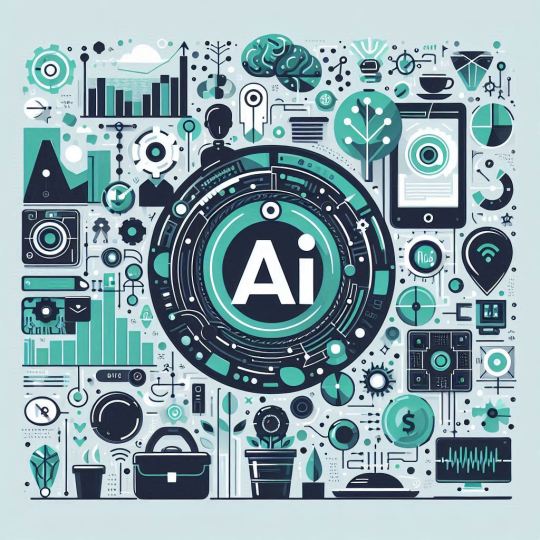
AI is revolutionizing business operations. Using AI-fuelled solutions means that you can automate processes, bring in positive customer experiences, and get insights. AI chatbots: AI can be utilized in the form of a conversational entity to support and perform backend operations, as well.
With a bit more specificity, say for example that an AI-powered recommendation engine recommends products to customers based on their browsing history and purchase patterns (as the use case of retail). This helps to increase the sales and improve the shopping experience.
3. Prioritize Cybersecurity
Cybersecurity is of utmost important as more and more business transitions towards digital platforms. Businesses need to part with a more substantial amount of money on advanced protective measures so that they can keep sensitive data private and continue earning consumer trust. Regular security audits and training of employees can reduce these risks.
Example: A financial services firm may implement multi-factor authentication (MFA) for all online transactions, regularly control access to Internet-facing administrative interfaces and service ports as well as the encryption protocols to secure client data from cyberattacks.
4. Optimizing Remote and Hybrid Working Models

Remote / hybrid is the new normal Remote teams force companies to implement effective motivation and management strategies. Collaboration tools and a balanced virtual culture can improve productivity and employee satisfaction.
- Illustration: a Tech company using Asana / Trello etc. for pm to keep remote teams from falling out of balance. They can also organise weekly team-building activities to keep a strong team spirit.
5. Focus on Customer Experience
Retention and growth of the sales follow-through can be tied to high quality customer experiences. Harness data analytics to deepen customer insights and personalize product offers making your marketing campaigns personal: a customer support that is responsive enough can drive a great level of returning customers.
Example – For any e-commerce business, you can take user experience feedback tools to know about how your customers are getting along and make necessary changes. Custom email campaigns and loyalty programs can also be positively associated with customer satisfaction and retention.
6. Digitalization Investment

It is only the beginning of digital transformation which we all know, is key to global competitiveness. For streamlining, companies have to adopt the use advanced technologies such as Blockchain Technology and Internet of Things (IoT) in conjunction with cloud computing.
IoT example : real-time tracking and analytics to optimize supply chain management
7. Enhance Employee Skills
Develop Your Employees: Investing in employee development is key to succeeding as a business. The training is provided for the folks of various industries and so employees can increase their skills that are needed to work in a certain company. Employee performance can be enhanced by providing training programs in future technology skills and soft skills and job satisfaction.
Example: A marketing agency can host webinars or create courses to teach people the latest digital marketing trends and tools This can help to keep employees in the know which results in boosting their skills, making your campaigns successful.
8. Diversify Supply Chains
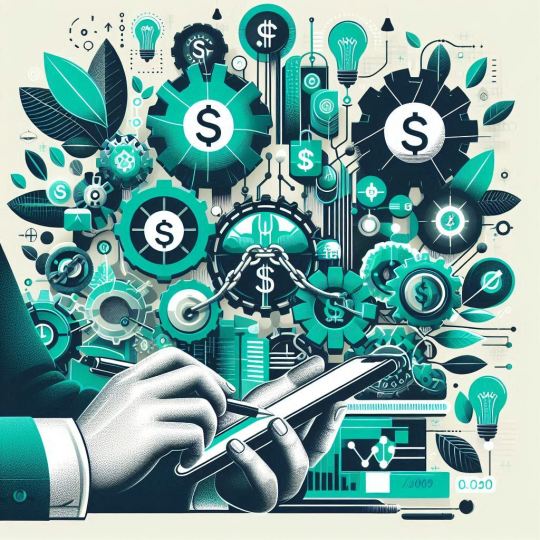
The ongoing pandemic has exposed the weaknesses of global supply chains. …diversify its supply base and promote the manufacturing of drugs in Nigeria to eliminate total dependence on a single source. In return, this approach increases resilience and reduces exposure to the risks of supply chain interruption.
- E.g., a consumer electronics company can source components from many suppliers in various regions. In so doing, this alleviates avoidable supply chain interruptions during times of political tensions or when disasters hit.
9. Make Decisions Based on Data
A business database is an asset for businesses. By implementing data, they allow you to make decisions based on the data that your analytics tools are providing. For example, sales analysis lets you track trends and better tailor your goods to the market.
Example: A retail chain can use data analytics to find out when a customer buys, and it change their purchasing policies. This can also reduce overstock and stockouts while overall, increasing efficiency.
10. Foster Innovation
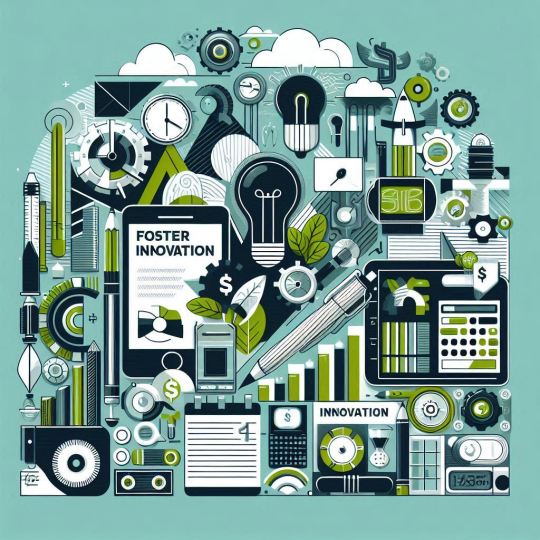
Business Growth Innovation is Key A culture of creativity and experimentation should be established in companies. Funding R&D and teaming with startups can open many doors to both solve problems creatively but also tap into new markets.
Example: A software development firm could create an innovation lab where team members are freed to work on speculative projects. Moreover, work with start-ups on new technologies and solutions.
By adopting these strategies, businesses can navigate the turbulence for 2024 and roll up market — progressive.AI with an evolving dynamic market, being ahead of trends and updated is most likely will help you thrive in the business landscape.
#ai#business#business strategy#business growth#startup#fintech#technology#tech#innovation#ai in business
2 notes
·
View notes
Text
Business Development in a Competitive Market: Strategies to Stay Ahead

In today's dynamic business landscape, thriving amidst fierce competition necessitates a strategic roadmap fueled by innovation, strategic thinking, and decisive action. This comprehensive guide serves as your compass, unveiling an array of meticulously tailored strategies designed not just to help you navigate the complexities but also to position your business as a torchbearer in a competitive market.
DOWNLOAD THE INFOGRAPHIC HERE
1. Understand Your Unique Value Proposition
In a world brimming with choices, establishing a distinct identity is paramount. This section delves into the intricacies of B2B Database Leads and B2B Lead Generation, unraveling the process of crafting a Unique Value Proposition (UVP) that resonates. By pinpointing your unique strengths and communicating them effectively, you forge a connection with your target audience that goes beyond transactional engagement.
2. Leverage Data Analysis
In an era where data is the cornerstone of decision-making, interpreting insights is a competitive advantage. Exploring Sales Leads and B2B Sales trends, this segment underscores the power of data analysis. By deciphering patterns, uncovering market shifts, and discerning consumer behaviors, you empower your business with the foresight needed to pivot proactively and capture emerging opportunities.
3. Prioritize Customer Satisfaction
Loyalty isn't just earned; it's cultivated through exceptional experiences. This part immerses you in the world of Sales Prospecting and B2B Database Leads, emphasizing the role of customer satisfaction. By anticipating needs, delivering prompt resolutions, and personalizing interactions, you foster a base of loyal customers who not only return but also advocate for your brand.
4. Invest in Technology
Technology isn't an accessory; it's the engine driving modern business. This chapter, interweaving Business Development and Sales Funnel strategies, magnifies the impact of technology investments. From streamlining operations to enhancing customer engagement, technological innovation is the catalyst for improved efficiency, customer delight, and strategic growth.
5. Engage in Strategic Partnerships
Collaboration isn't just a concept; it's a gateway to exponential progress. Venturing into B2B Lead Generation and AccountSend strategies, this section illuminates the art of forming strategic partnerships. By aligning with entities that complement your strengths and expand your reach, you embark on a journey of shared growth, propelling each other toward collective success.
6. Nurture a Strong Company Culture
Company culture isn't just for the office; it extends to every customer interaction. This segment dives into the subtleties of Sales Prospecting and B2B Database Leads, highlighting the significance of a robust company culture. A culture that champions innovation, values diversity, and empowers employees becomes the secret ingredient to attracting top talent and fostering exceptional customer experiences.
youtube
7. Adopt Agile Business Practices
Agility isn't just a buzzword; it's a competitive necessity. This part immerses you in the core of Business Development and B2B Sales, emphasizing the power of adaptability. By embracing flexible strategies, swift course corrections, and rapid responses to market shifts, you ensure your business remains poised to seize opportunities, even in the face of uncertainty.
8. Innovate Constantly
Innovation isn't sporadic; it's a perpetual journey. Navigating Sales Funnel dynamics and B2B Sales strategies, this section spotlights the importance of ongoing innovation. Whether through breakthrough products, iterative improvements, or ingenious solutions to challenges, a commitment to innovation becomes the lifeblood of your brand's growth and resilience.
9. Enhance Your Online Presence
In the digital realm, your online presence is your storefront. This part delves into Sales Prospecting and B2B Database Leads, emphasizing the role of a robust online presence. From an engaging website to active social media engagement, your digital footprint becomes the canvas on which you engage, educate, and forge connections with your audience.
10. Invest in Continuous Learning and Development
In a landscape where change is constant, learning is your compass. This final chapter, rooted in Business Development and Sales Leads, underscores the value of continuous growth. By fostering a culture of learning, you equip yourself and your team with the tools needed to decipher trends, refine strategies, and navigate the evolving landscape with confidence.
In the intricate tapestry of business, thriving is more than an aspiration; it's a science that marries B2B Lead Generation, Sales Prospecting, and Business Development. This guide empowers you to take the reins, lead with insight, and emerge as a frontrunner in the competitive race, armed with strategic prowess, innovative spirit, and an unwavering commitment to progress.
#AccountSend#B2BLeadGeneration#B2B#LeadGeneration#B2BSales#SalesLeads#B2BDatabases#BusinessDevelopment#SalesFunnel#SalesProspecting#BusinessOwner#Youtube
16 notes
·
View notes
Text
BUSINESS GROWTH TIPS
Embark on a transformative journey toward business growth with these expert strategies curated by Jagmohan Krishan, a seasoned full-stack developer and digital enthusiast. In this guide, we delve into six major points, each offering a unique perspective on propelling your business to new heights.

1. DIGITAL TRANSFORMATION AND INNOVATION:
In today’s dynamic business landscape, digital transformation is not a luxury but a necessity. Jagmohan Krishan emphasizes the role of innovation in embracing new technologies, from AI and automation to immersive digital experiences, to stay ahead of the competition and drive business growth.
2. CUSTOMER-CENTRIC APPROACH:
Explore the significance of a customer-centric approach in business growth. Jagmohan Krishan highlights the importance of understanding customer needs, gathering feedback, and leveraging data analytics to tailor products and services, fostering long-term relationships and brand loyalty.
3. STRATEGIC MARKETING AND BRANDING:
Uncover the art of strategic marketing and branding as essential catalysts for business growth. Jagmohan Krishan delves into creating a compelling brand narrative, harnessing the power of digital channels, and employing data-driven marketing strategies to maximize visibility, attract new customers, and enhance brand reputation.
4. AGILE BUSINESS OPERATIONS:
Adaptability and agility are paramount in the ever-evolving business landscape. Jagmohan Krishan advocates for embracing agile methodologies and technologies that enhance operational efficiency, streamline processes, and enable quick responses to market changes, positioning your business for sustained growth.
"EMPOWER YOUR BUSINESS WITH INNOVATION, CUSTOMER-CENTRICITY, AND AGILE STRATEGIES. IN THE REALM OF GROWTH, EVERY CALCULATED STEP IS A STRIDE TOWARD SUCCESS. - JAGMOHAN KRISHAN"
5. TALENT DEVELOPMENT AND TEAM EMPOWERMENT:
Recognizing the role of skilled and motivated teams in driving business success, Jagmohan Krishan emphasizes the importance of talent development and team empowerment. From fostering a culture of continuous learning to providing avenues for professional growth, discover how investing in your team can be a strategic move for business growth.
6. DATA-DRIVEN DECISION MAKING:
In the era of big data, making informed decisions based on data analytics is a game-changer. Jagmohan Krishan explores the power of data-driven decision-making, from market trend analysis to customer behavior insights, guiding businesses to leverage data as a strategic asset for growth-oriented strategies.
As you navigate through these business growth tips, curated by Jagmohan Krishan, envision a roadmap that aligns technology, customer focus, strategic operations, team empowerment, and data-driven insights to propel your business toward sustainable success. Embrace these strategies as pillars for transformation and witness the positive impact they bring to your business journey.
#software development#developers & startups#web development#web developers#mobile app development#wordpress development
2 notes
·
View notes
Text

Most people recognize that there are first names given almost exclusively by black Americans to their children, such as Jamal and Latasha.
While fodder for comedians and social commentary, many have assumed that these distinctively black names are a modern phenomenon. My research shows that’s not true.
Long before there was Jamal and Latasha, there was Booker and Perlie. The names have changed, but mycolleagues and I traced the use of distinctive black names to the earliest history of the United States.
As scholars of history, demographics and economics, we found that there is nothing new about black names.
youtube
Black Names Aren’t New
Many scholars believe that distinctively black names emerged from the civil rights movement, perhaps attributable to the Black Power movement and the later black cultural movement of the 1990s as a way to affirm and embrace black culture. Before this time, the argument goes, blacks and whites had similar naming patterns.
Historical evidence does not support this belief.
Until a few years ago, the story of black names depended almost exclusively on data from the 1960s onward. New data, such as the digitization of census and newly available birth and death records from historical periods, allows us to analyze the history of black names in more detail.
We used federal census records and death certificates from the late 1800s in Illinois, Alabama and North Carolina to see if there were names that were held almost exclusively by blacks and not whites in the past. We found that there were indeed.
For example, in the 1920 census, 99 percent of all men with the first name of Booker were black, as were 80 perecent of all men named Perlie or its variations. We found that the fraction of blacks holding a distinctively black name in the early 1900s is comparable to the fraction holding a distinctively black name at the end of the 20th century, around 3 percent.
What Were the Black Names Back Then?
We were interested to learn that the black names of the late 1800s and early 1900s are not the same black names that we recognize today.
The historical names that stand out are largely biblical such as Elijah, Isaac, Isaiah, Moses and Abraham, and names that seem to designate empowerment such as Prince, King and Freeman.
These names are quite different from black names today such as Tyrone, Darnell and Kareem, which grew in popularity during the civil rights movement.
Once we knew black names were used long before the civil rights era, we wondered how black names emerged and what they represented. To find out, we turned to the antebellum era – the time before the Civil War – to see if the historical black names existed before the emancipation of slaves.
Since the census didn’t record the names of enslaved Africans, this led to a search of records of names from slave markets and ship manifests.
Using these new data sources, we found that names like Alonzo, Israel, Presley and Titus were popular both before and after emancipation among blacks. We also learned found that roughly 3 percent of black Americans had black names in the antebellum period – about the same percentage as did in the period after the Civil War.
But what was most striking is the trend over time during enslavement. We found that the share of black Americans with black names increased over the antebellum era while the share of white Americans with these same names declined, from more than 3 percent at the time of the American Revolution to less than 1 percent by 1860.
By the eve of the Civil War, the racial naming pattern we found for the late 1800s was an entrenched feature in the U.S.

Company E was the fourth U.S. Colored Infantry during the Civil War. Credit: Everett Historical / Shutterstock.com.
Why Is This Important?
Black names tell us something about the development of black culture, and the steps whites were taking to distance themselves from it.
Scholars of African American cultural history, such as Lawrence W. Levine, Herbert Gutman and Ralph Ellison, have long held that the development of African American culture involves both family and social ties among people from various ethnic groups in the African diaspora.
In other words, people from various parts of Africa came together to form black culture as we recognize it today. One way of passing that culture on is through given names, since surnames were stolen during enslavement.
How this culture developed and persisted in a chattel slavery system is a unique historical development. As enslavement continued through the 1800s, African American culture included naming practices that were national in scope by the time of emancipation, and intimately related to the slave trade.
Since none of these black names are of African origin, they are a distinct African American cultural practice which began during enslavement in the U.S.
As the country continues to grapple with the wide-ranging effects of enslavement in the nation’s history, we cannot – and should not – forget that enslavement played a critical role in the development of black culture as we understand it today.
Trevon Logan is the Hazel C. Youngberg Distinguished Professor of Economics at The Ohio State University
#Black Culture Matters#Black Names#A Brief History of Black Names#From Perlie to Latasha#Black Lives Matter#Youtube
5 notes
·
View notes